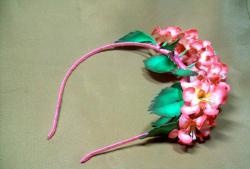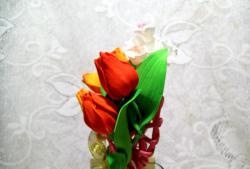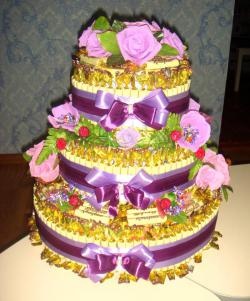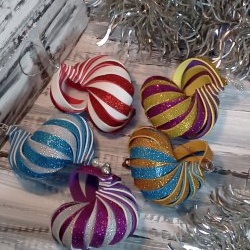Foamiran headband
The rose is made of plastic suede. The height of the flower is 6 cm and the diameter is 11 cm.
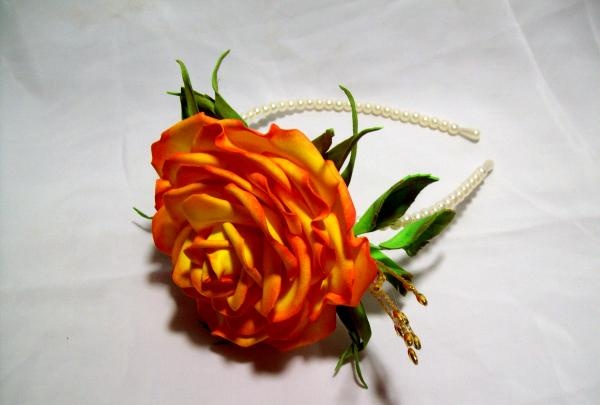
For work we take materials:
- paper.
- plastic suede in yellow and green colors.
- scissors.
- the wire is thin.
- headband.
- a set of acrylic paint.
- a little foam rubber.
- food foil.
- glue gun.
- several beads for decoration.
- toothpick.
- lighter.
- plastic sheet for pressing the texture.
A large rose requires four sizes of petals, sepals and leaves. We take and cut out blank templates from paper. You need squares with sides of 4 cm, 5 and 5.5 cm, also 6 cm, then cut them out in the shape of droplets. In the two larger sizes the top edge will have a wave. Next you will need a boat-shaped sheet, measuring 4.5 x 2.5 cm and 8 x 3 cm.
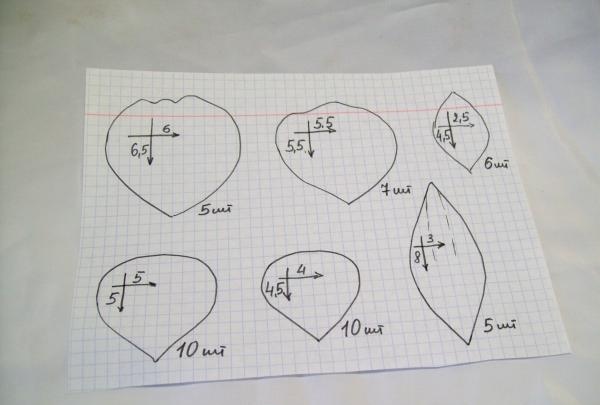
And according to the templates, we cut out two small sizes of 10 pieces from yellow suede. There are 7 medium petals, and only 5 blanks are needed for large petals. And from green suede you will need 6 smaller leaves and 5 larger pieces..
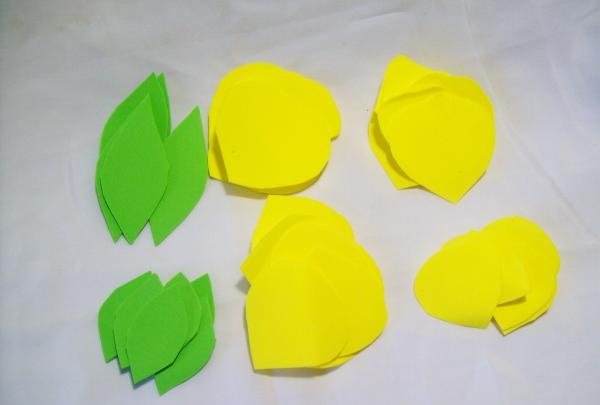
Let's prepare the headband. If it is undecorated, then it should be covered with tape.
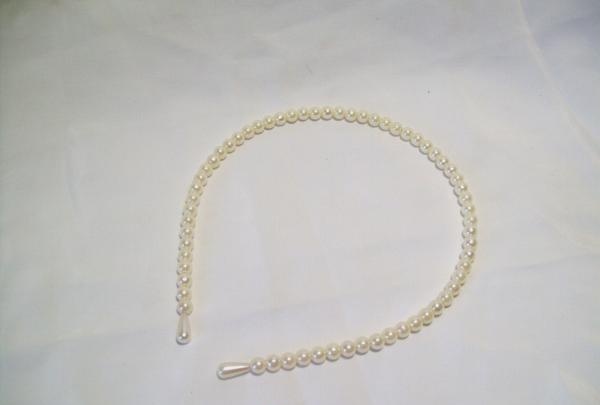
And take green and red paint. We will paint it with a piece of foam rubber.
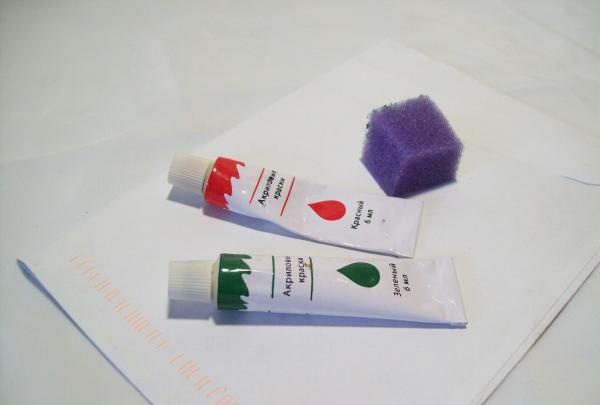
Let's start with the largest ones, and they should be covered with foam rubber and paint along the edge of the petals on both sides. Then apply an additional layer in the middle of the workpieces and also on both sides. Then we continue to paint the blanks only along the upper edge.
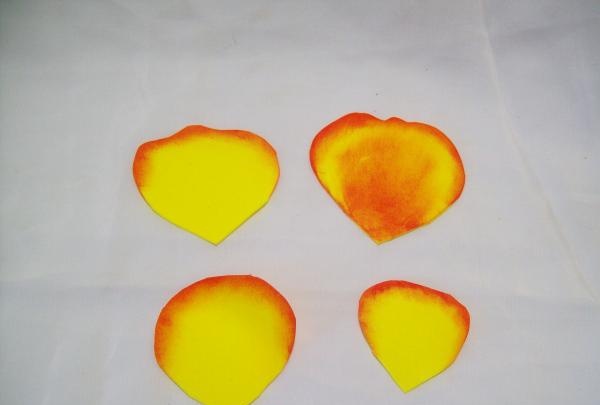
When the petals have dried, we begin to process them with a lighter. Let's start with the smallest size of blanks. We make the middle of the petal warm so that it can change shape. Therefore, we immediately make a depression in the middle of the petal with our thumbs. Next, you should make a bend on both sides along the edge of the blanks. We bring fire from the left and right of the wide part of the petal. The edge itself makes a nice little bend. In this way we change the shape of two small sizes of blanks.
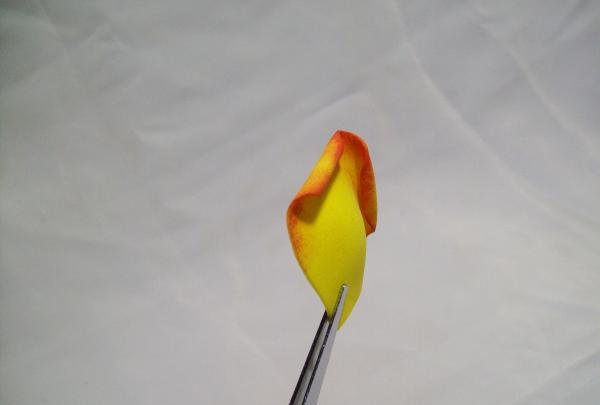
The middle petals have a larger recess, and the two folds at the edge of the blanks do not affect the middle part.
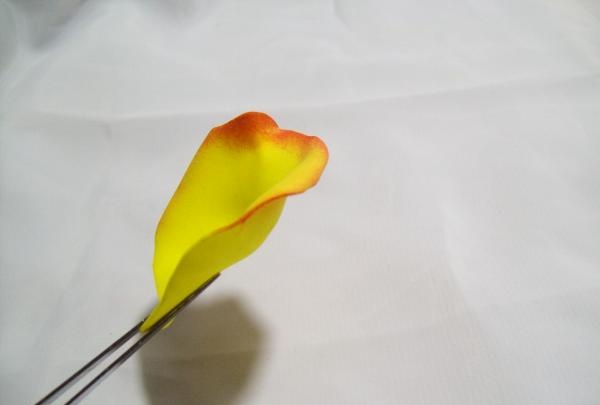
But on large petals you need to do everything like everyone else, additionally warm up the middle of the upper edge and make an additional curl. It should be taken into account that the front side of the petal will be the red side of the workpiece.
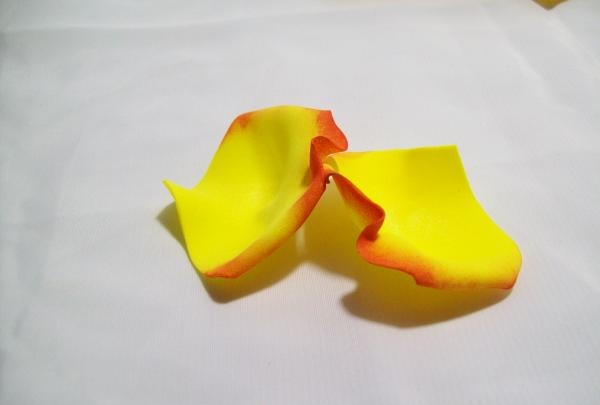
Here. Now all the petals are ready.
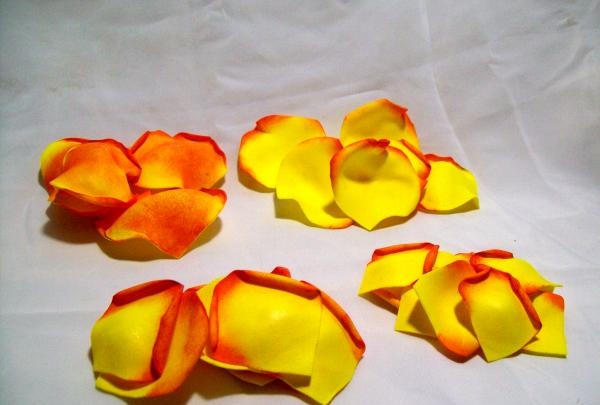
Next we move on to the green blanks. On large leaves, apply green paint along the edge of the part on both sides, rubbing towards the middle.
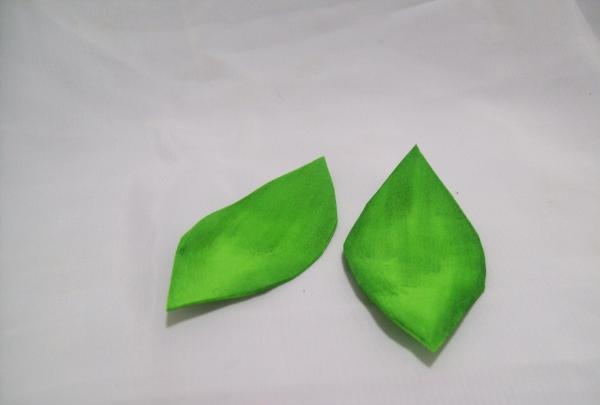
Then we additionally apply red color.
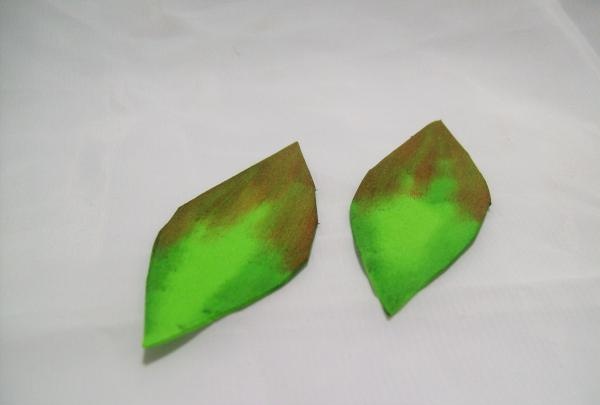
Then we make 3 cuts from the top edge to the middle of the workpiece. Place two sheets of paper together and twist the separated part with your fingers.
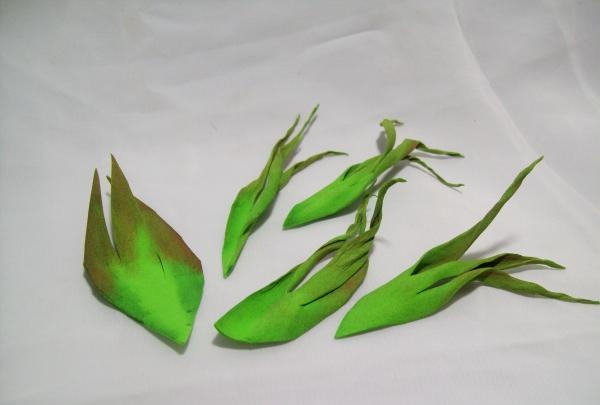
Let's move on to small leaves. Warm it up with a lighter and quickly apply it to the mold to imprint the veins on the leaves. You can do this with a toothpick, just draw these outlines.
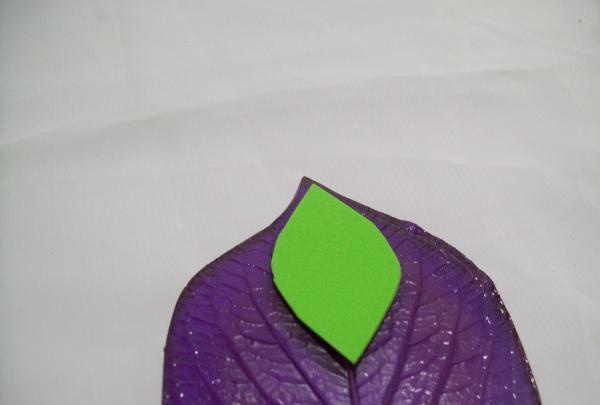
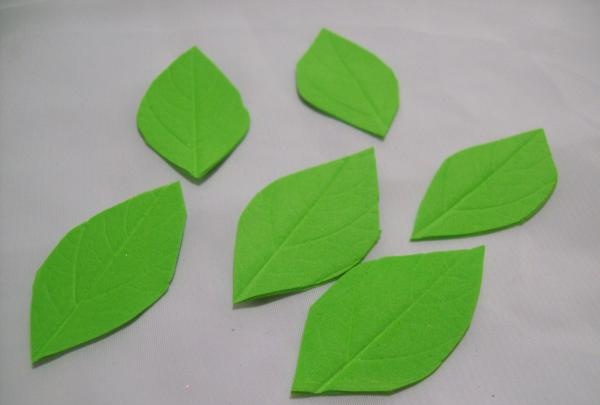
Next we paint such blanks with green and red paint on both sides.
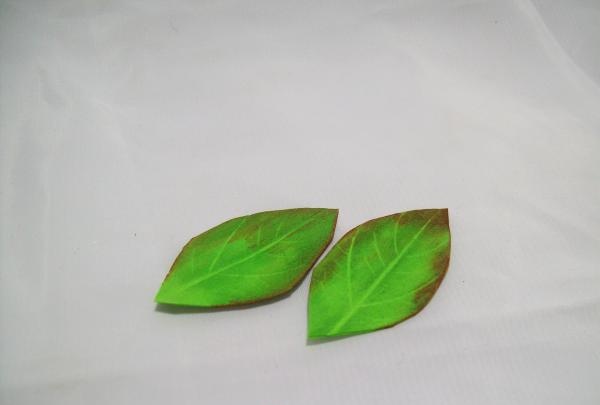
Then you should trim the leaves correctly with scissors so that the middle vein corresponds to the middle of the workpiece. And additionally we make teeth on the leaves along the edge.
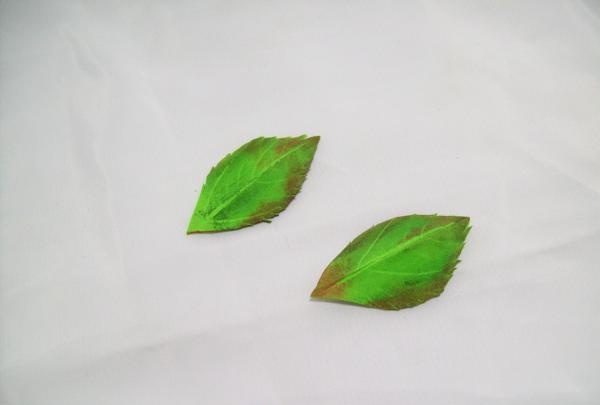
All that remains is to glue the resulting parts onto a wire wrapped in green paper. On the front side of the sheet in the lower corner we place the edge of the wire and press it well.
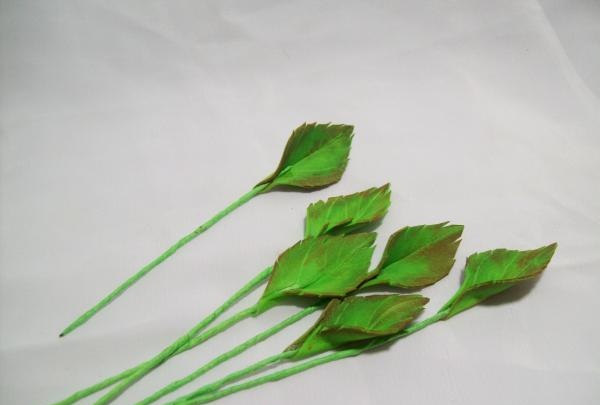
Now let's move on to assembling the rose itself. We make a base of foil on a wire. You should immediately glue the green paper at the base.

Let's start the assembly with small petals. We glue the first 3 blanks tightly onto the base, completely covering the entire foil on top.
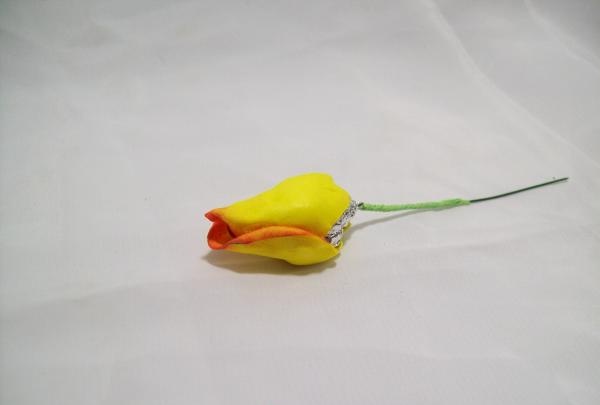
We place the remaining 6 petals in a circle, applying glue to the middle of the parts. We apply it with one workpiece overlapping another.
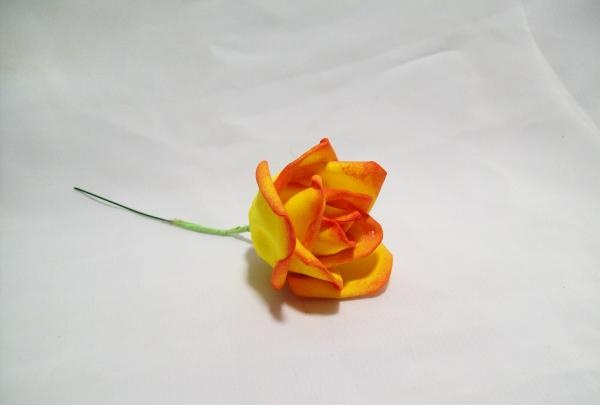
We glue another 10 petals in the same way in a circle in two rows of 5 parts each. On the blanks themselves, we lubricate only the narrow bottom with glue.
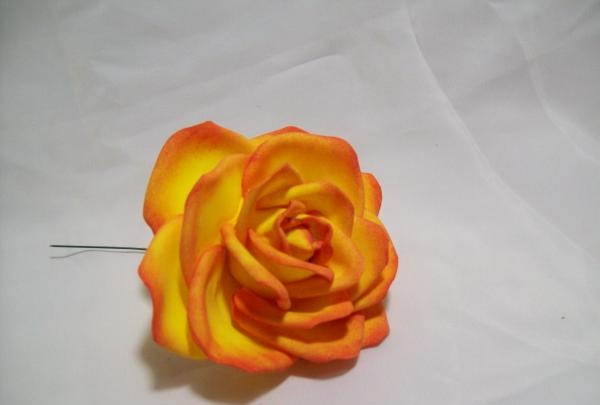
We place the medium-sized petals with one part overlapping the second. There will be 7 blanks in a row.
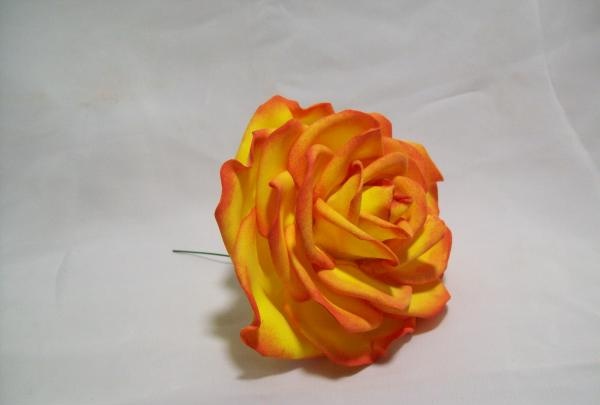
And we simply glue the largest petals in a circle.
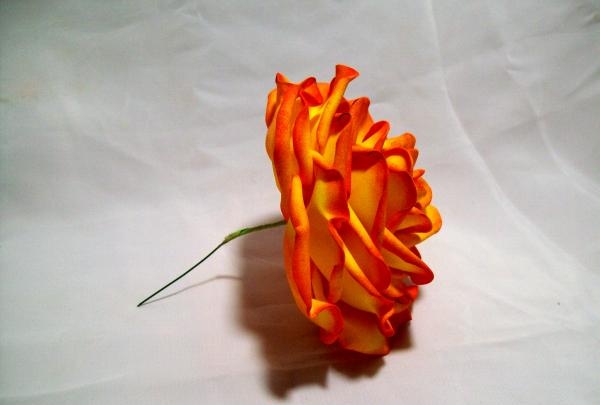
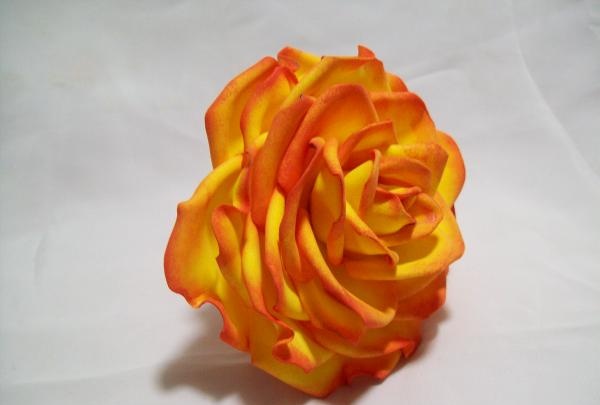
Now we turn the resulting flower upside down with the wire, and glue 5 large green blanks. It turns out to be a sepal on a rose.
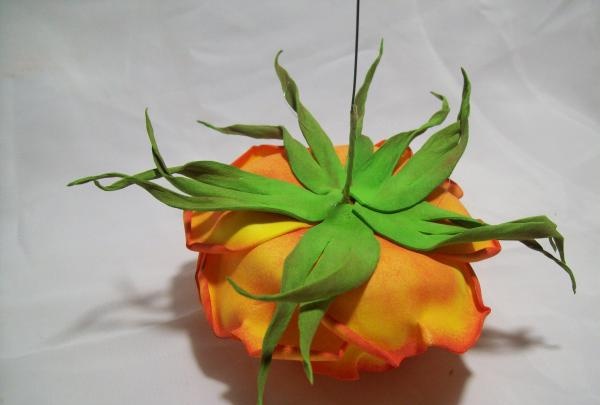
Leave the wire length no more than 4 cm.
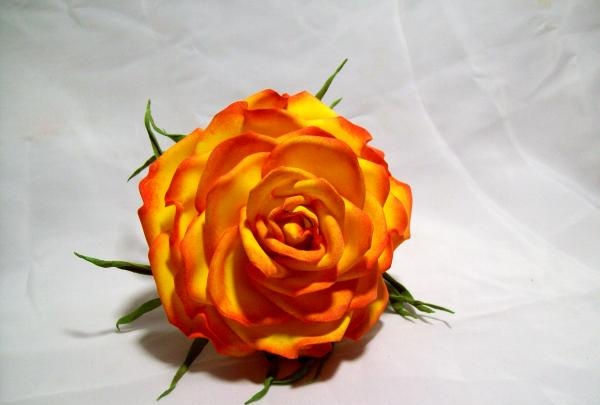
To assemble the rim you should prepare. If necessary, cover the rim itself with a thin ribbon. On the rose, if desired, attach a decoration made of fishing line with beads or balls on a wire. Gather the green leaves into bundles of 3 and secure them together by 1 cm, leaving the wires another 2 cm longer.
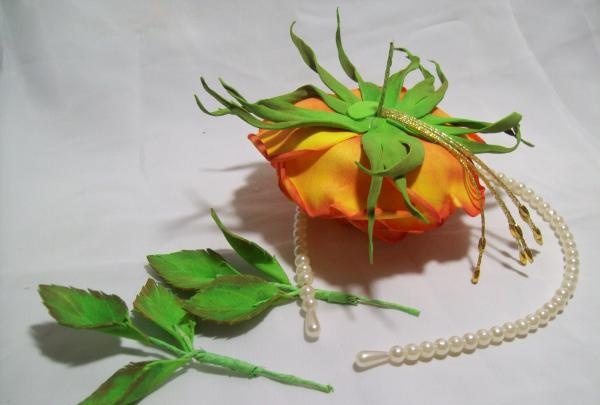
Let's start assembling. We step back 6 cm from the middle of the rim and screw a bunch of leaves sloping downwards onto the free edge of the wire. Then we glue a strip of suede around the rim and stem, covering the junction.
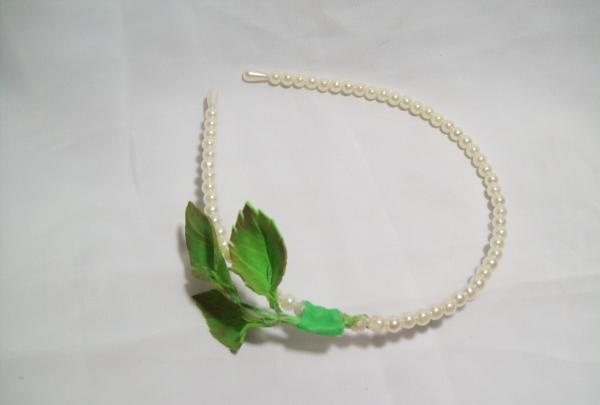
We fasten the second leaves in the opposite direction from the first.We screw the rose itself in the middle of the leaves. We carefully close everything from the wrong side.
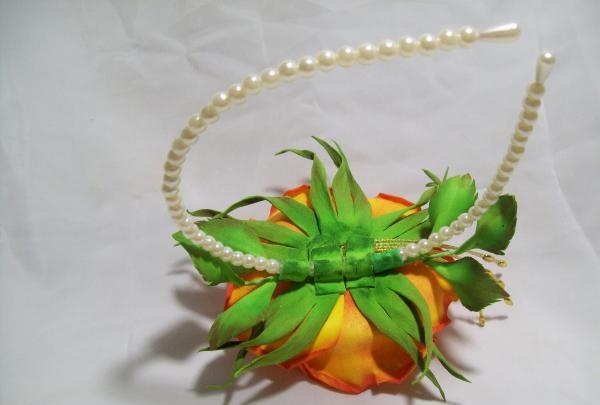
The headband with a rose is ready.
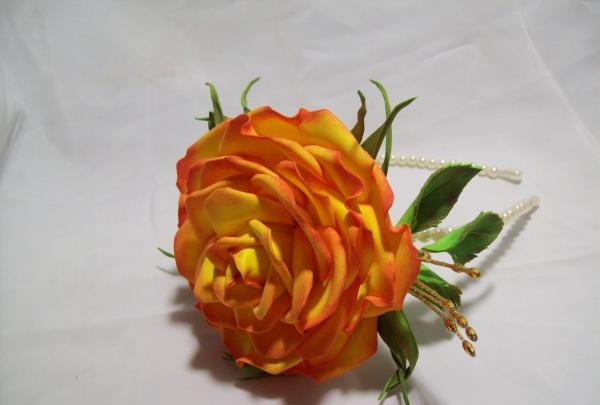
Good luck to all!

For work we take materials:
- paper.
- plastic suede in yellow and green colors.
- scissors.
- the wire is thin.
- headband.
- a set of acrylic paint.
- a little foam rubber.
- food foil.
- glue gun.
- several beads for decoration.
- toothpick.
- lighter.
- plastic sheet for pressing the texture.
A large rose requires four sizes of petals, sepals and leaves. We take and cut out blank templates from paper. You need squares with sides of 4 cm, 5 and 5.5 cm, also 6 cm, then cut them out in the shape of droplets. In the two larger sizes the top edge will have a wave. Next you will need a boat-shaped sheet, measuring 4.5 x 2.5 cm and 8 x 3 cm.

And according to the templates, we cut out two small sizes of 10 pieces from yellow suede. There are 7 medium petals, and only 5 blanks are needed for large petals. And from green suede you will need 6 smaller leaves and 5 larger pieces..

Let's prepare the headband. If it is undecorated, then it should be covered with tape.

And take green and red paint. We will paint it with a piece of foam rubber.

Let's start with the largest ones, and they should be covered with foam rubber and paint along the edge of the petals on both sides. Then apply an additional layer in the middle of the workpieces and also on both sides. Then we continue to paint the blanks only along the upper edge.

When the petals have dried, we begin to process them with a lighter. Let's start with the smallest size of blanks. We make the middle of the petal warm so that it can change shape. Therefore, we immediately make a depression in the middle of the petal with our thumbs. Next, you should make a bend on both sides along the edge of the blanks. We bring fire from the left and right of the wide part of the petal. The edge itself makes a nice little bend. In this way we change the shape of two small sizes of blanks.

The middle petals have a larger recess, and the two folds at the edge of the blanks do not affect the middle part.

But on large petals you need to do everything like everyone else, additionally warm up the middle of the upper edge and make an additional curl. It should be taken into account that the front side of the petal will be the red side of the workpiece.

Here. Now all the petals are ready.

Next we move on to the green blanks. On large leaves, apply green paint along the edge of the part on both sides, rubbing towards the middle.

Then we additionally apply red color.

Then we make 3 cuts from the top edge to the middle of the workpiece. Place two sheets of paper together and twist the separated part with your fingers.

Let's move on to small leaves. Warm it up with a lighter and quickly apply it to the mold to imprint the veins on the leaves. You can do this with a toothpick, just draw these outlines.


Next we paint such blanks with green and red paint on both sides.

Then you should trim the leaves correctly with scissors so that the middle vein corresponds to the middle of the workpiece. And additionally we make teeth on the leaves along the edge.

All that remains is to glue the resulting parts onto a wire wrapped in green paper. On the front side of the sheet in the lower corner we place the edge of the wire and press it well.

Now let's move on to assembling the rose itself. We make a base of foil on a wire. You should immediately glue the green paper at the base.

Let's start the assembly with small petals. We glue the first 3 blanks tightly onto the base, completely covering the entire foil on top.

We place the remaining 6 petals in a circle, applying glue to the middle of the parts. We apply it with one workpiece overlapping another.

We glue another 10 petals in the same way in a circle in two rows of 5 parts each. On the blanks themselves, we lubricate only the narrow bottom with glue.

We place the medium-sized petals with one part overlapping the second. There will be 7 blanks in a row.

And we simply glue the largest petals in a circle.


Now we turn the resulting flower upside down with the wire, and glue 5 large green blanks. It turns out to be a sepal on a rose.

Leave the wire length no more than 4 cm.

To assemble the rim you should prepare. If necessary, cover the rim itself with a thin ribbon. On the rose, if desired, attach a decoration made of fishing line with beads or balls on a wire. Gather the green leaves into bundles of 3 and secure them together by 1 cm, leaving the wires another 2 cm longer.

Let's start assembling. We step back 6 cm from the middle of the rim and screw a bunch of leaves sloping downwards onto the free edge of the wire. Then we glue a strip of suede around the rim and stem, covering the junction.

We fasten the second leaves in the opposite direction from the first.We screw the rose itself in the middle of the leaves. We carefully close everything from the wrong side.

The headband with a rose is ready.

Good luck to all!
Similar master classes
Particularly interesting
Comments (0)

